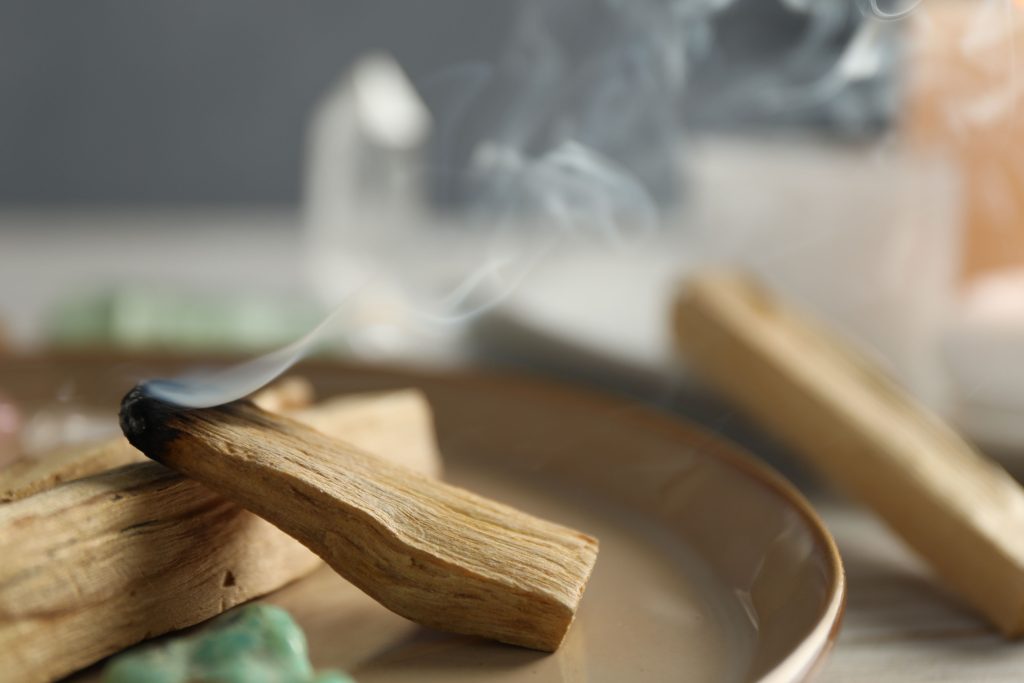
www.optimistdaily.com
Palo Santo explained: history, meaning, and mindful ways to use it
BY THE OPTIMIST DAILY EDITORIAL TEAM
If you’ve ever caught a sensual whiff of the warm, grounding scent of palo santo smoke, you know why people call it magical. In Spanish, the name means “holy wood,” and for centuries it has been treasured across South America for both healing and spiritual purposes. Indigenous traditions from Peru to Ecuador teach that palo santo is not just wood. Palo santo carries the spirit of the tree itself. That’s why fallen branches are left untouched for years before being used, allowing the tree’s essence to deepen and strengthen.
Where palo santo grows
This tree thrives in the dry, tropical forests of Central and South America, stretching from Mexico’s Yucatán Peninsula to the Galápagos Islands. For generations, its smoke has been used to clear energy from homes and people, to call in creativity, and even to ease physical complaints like coughs, headaches, or anxiety. In Peru and Ecuador, its fragrant burn has another practical role: a natural mosquito repellent.
Smudging: ritual with the four elements
One of the most familiar ways to use palo santo is through smudging. The ritual weaves together fire (the flame), earth (the wood itself), air (the smoke), and water (often represented by a shell used to catch embers). This blending of elements turns a simple act of burning wood into something symbolic: a way to clear away old energy and make space for the new. Many people pair the ritual with affirmations, prayers, or meditation for extra focus.
How to try a cleansing ritual
Want to bring palo santo into your own space? Here’s a simple approach:
Light a stick and let it burn for about 30 to 60 seconds until the smoke begins to curl.
For personal cleansing, guide the smoke gently from head to toe. For a room, walk through slowly, starting at the back and moving toward the front door.
Trace doorways and windows with the smoke as if you’re sealing in good energy.
Place the stick in a heatproof dish or shell and allow it to go out naturally.
Open a window to refresh the space, and take a moment to express gratitude.
More than sticks: other forms of palo santo
Palo santo isn’t limited to smoky rituals. Its essential oil can be added to a diffuser to ease stress, encourage relaxation, or even repel insects thanks to its limonene content. A few drops massaged into the temples may help with headaches. Resin can be burned as incense, while chips or powder are often used in aromatherapy practices. Each form offers its own gentle way to bring palo santo’s calming presence into daily life.
Clearing up confusion about conservation
Is palo santo endangered? The answer depends on the species. The most commonly used type, Bursera graveolens, is listed as “least concern” by the International Union for Conservation of Nature, meaning it is not at risk. Another species, Bulnesia sarmientoi, found in Argentina, Paraguay, and Brazil, is endangered. When buying palo santo, look for ethical and sustainable sourcing to ensure the wood you’re using is the right species and harvested responsibly.
A practice of respect and gratitude
At its heart, palo santo is about more than fragrance. It’s about slowing down, connecting with traditions that honor nature, and using ritual as a way to reset. Whether you light a stick before meditation, diffuse its oil for calm, or simply appreciate its history, the practice invites mindfulness and gratitude for the natural world.The post Palo Santo explained: history, meaning, and mindful ways to use it first appeared on The Optimist Daily: Making Solutions the News.










